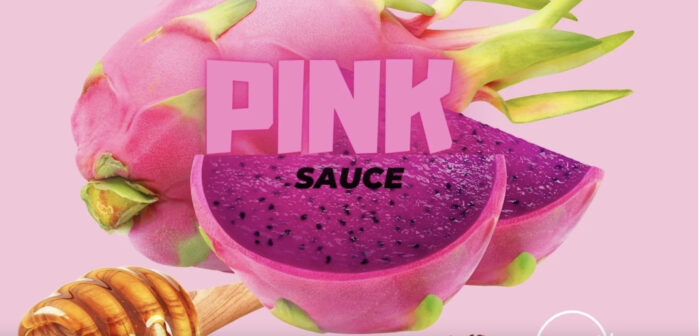
In the past few week, a condiment dominated TikTok. It was simply called “Pink Sauce,” and created by a mixologist and private chef with the username Chef Pii. After teasing that she couldn’t quite describe what the sauce tasted like, the product went live on July 1, and individuals could buy a bottle online for $20. The website revealed the ingredients: Water, sunflower seed oil, raw honey, distilled vinegar, garlic, pitaya (dragon fruit), pink Himalayan sea salt, dried spices, lemon juice, milk, and citric acid.
The problems started when orders arrived. The color was off; sauces were lighter or darker than advertised on Pii’s website. When the bottles were opened, some exploded and some had putrid odors. The nutrition labels misspelled ingredient names and claimed that one bottle included 444 1-tablespoon servings. Concerned chefs jumped into the TikTok discourse, pointing out the expanding bottles indicated potential botulism. Additionally, although milk was listed as an ingredient, Pink Sauce wasn’t shipped in refrigerated packaging, during a heatwave spanning large parts of the U.S. It’s still unclear whether Pink Sauce has been registered with the U.S. Food and Drug Administration, which monitors condiment distribution. (Pii claims she is now working with the FDA.)
Pink Sauce was a condiment made for social media. It was bright, pretty, and mysterious. was part image, part mystery. On one hand, Pink Sauce fits the ideal social media aesthetic — bright, pretty, and makes any simple food “pop.” Chef Pii promised the sauce was “sweet, it’s tangy, it’s a little spicy.” It looked pretty and it made for interesting content, both in terms of unboxing and videos answering the mystery about the taste. (“Literally tastes like a sweet ranch.”)
@realcarsonwerner Pink sauce is SKETCHY #pinksauce #pinksaucereview #viral ♬ original sound – Carson Werner
Pink Sauce may also be the sign that we’ve reached the next phase in an internet culture that has privileged aesthetic over function for years.
In the 2010s, the world was dominated by the “Instagrammable” aesthetic. Cool travel shots, perfect selfies, and influencers living glamorized lifestyles were just some of the end results of the Instagrammable aesthetic. Estonian internet scholar Katrin Tiidenberg argues that the idea of something being Instagrammable refers to “those aspects of platforms and apps that we perceive as making it possible … for us to be able to perfectly capture and present our life as enjoying, inspiring, and jealousy-inducing.”
Businesses, brands, and artists leaned in as well, and the second half of the 2010s saw a proliferation of “made-for-Instagram” activities: Selfies from Yayoi Kusama’s Infinity Mirror Rooms exhibition! Goat yoga! And, of course, Instagrammable food. Food media scholar Emily Contois points out that in the 2010s, Instagram influenced major aspects of the food industry, from presentation to restaurant lighting. Then there were the dishes themselves — marshmallow flowers that bloom in hot chocolate, crazy milkshakes, cookie dough shot glasses.
The pursuit of Instagrammable food was bolstered by the press. The New York Times food section devoted column inches and its own social media posts to what was popular on Instagram — taking the popular, the new, and the slightly odd and making them intelligible for a general population. In the process of demystifying digital cultural trends, the press amplifies them as well.
Pink Sauce exists at the intersection of the Instagrammable aesthetic, internet virality, and the side hustle economy. But Pink Sauce is birthed from TikTok, not Instagram, and the platform matters. TikTok is no Instagram and Instagram is no TikTok (even though it wants to be). Many of the most popular TikTok users have eschewed the influencer perfection of Instagram, privileging rawness, silliness, and mistakes over Photoshop, glamour, and prettiness. As content creators seek out additional sources of income to counteract the precarious financial systems of platforms, we’ll see more products like Pink Sauce.
Jessica Maddox is an assistant professor of digital media at the University of Alabama. She researches internet culture, social media platforms, and content creators.